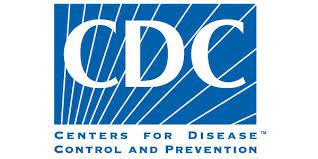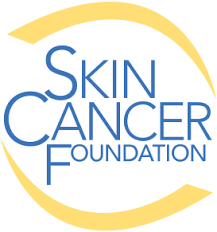Nail Fungus/ Onychomycosis
Nail Fungus Onychomycosis
Decoding Causes, Symptoms, and Effective Treatments
Onychomycosis, also known as nail fungus, is a common condition that affects toenails and fingernails. It is characterized by the separation of the nail from the nail bed, leading to thickened, fragile, and discolored nails. In this comprehensive article, we will explore the causes, symptoms, and treatments for nail fungus Onychomycosis, as well as answer ten common questions about this condition.
Understanding Nail Fungus Onychomycosis
Nail fungus is caused by a fungal infection that affects the toenails or fingernails. The condition can result from various types of fungi, including dermatophytes, yeasts, and molds. The infection can spread from one nail to another and can sometimes lead to more severe complications if left untreated.
Causes and Risk Factors
Some factors that may increase the risk of developing nail fungus Onychomycosis include:
- Age: As people age, their nails grow more slowly and become thicker, making them more susceptible to fungal infections.
- Sweating heavily: Excessive sweating can create a moist environment that encourages fungal growth.
- Walking barefoot in damp public areas: Places like swimming pools, gyms, and shower rooms can harbor fungi that cause nail infections.
- Having a weakened immune system: Individuals with weakened immune systems are more prone to fungal infections.
- Skin or nail injuries: Damaged skin or nails can provide an entry point for fungi.
Diagnosis and Treatment
Diagnosing nail fungus Onychomycosis typically involves a visual examination by a healthcare professional. In some cases, a sample of the affected nail may be taken for laboratory testing.
Treatment options for nail fungus Onychomycosis include:
- Oral antifungal medications: Itraconazole (Sporanox) is one option that helps a new nail grow free of infection, gradually replacing the infected part.This type of medication is typically taken daily for 6 to 12 weeks.
- Topical therapies: Topical treatments like ciclopirox 8%, efinaconazole 10%, and tavaborole 5% can be used to treat mild to moderate onychomycosis.
- Over-the-counter treatments: Zinc undecylenate and undecylenic acid are both FDA-approved ingredients to treat toenail fungus.
- Prescription medications: Dermatologists may prescribe medications in the “azole” family that interfere with the synthesis of the fungal cell membrane, effectively killing the fungus.
The journey to a more confident you starts with one decision. That is the decision to get treated, why wait Book Online today? If you’re on the fence or have questions brewing, remember: We at Sullivan Dermatology are always here to help.
Videos
Nail Fungus Onychomycosis
Nail fungus, medically known as onychomycosis, is a common condition that begins as a white or yellow spot under the tip of your fingernail or toenail. As the fungal infection goes deeper, it can cause your nail to discolor, thicken, and crumble at the edge. Nail fungus can be an unsightly and potentially painful problem that can occur from various sources, including artificial nail applications, such as acrylic nails.
Common symptoms of nail fungus include a distorted nail that may lift off from the nail bed, an odor coming from the infected nail, and a brittle or thickened nail. In some cases, people might get finger nail fungus from acrylic nails, as artificial nails can create a space where fungi can thrive, leading to infection.
If you notice any unusual changes in your nails, it’s best to consult a nail fungus doctor for accurate diagnosis and treatment. While nail fungus may be more often associated with toenails, remember that it can affect fingernails as well.
Nail fungus is caused by various types of fungi, including dermatophytes, yeasts, and molds. Aging, heavy perspiration, a history of athlete’s foot, walking barefoot in damp public areas, diabetes, circulation problems, and a weakened immune system can all increase the likelihood of developing nail fungus. Additionally, prolonged use of acrylic nails or nail polish can increase the risk of infection. Finger nail fungus from acrylic nails is a common issue, as the space under the nail provides a perfect environment for fungi to grow.
One common myth is that nail fungus is merely a cosmetic issue. In reality, if left untreated, nail fungus can lead to complications, especially in people with diabetes or immune disorders. Another myth is that nail polish can help treat nail fungus. However, using regular nail polish can actually trap moisture and exacerbate the condition. Fortunately, there is nail polish for fungus, which contains antifungal ingredients, available in the market.
Treatment options for nail fungus include antifungal drugs, medicated nail polish, medicated nail cream, and, in severe cases, surgery. Oral antifungal drugs are the most common treatment for nail fungus. They help a new nail grow free of infection, slowly replacing the infected part of your nail.
Medicated nail polish for fungus, also known as ciclopirox, is painted onto your infected nails and surrounding skin once a day. After seven days, you wipe the piled-on layers clean with alcohol and begin fresh applications.
Topical creams can be effective if the infection is caught early, but they may not fully clear the fungus if the infection is advanced or underneath the nails.
For severe or painful nail fungus, your nail fungus doctor might suggest removing the nail. A new nail will usually grow in its place, though it will come in slowly and may take as long as a year to fully grow in.
Remember, over-the-counter treatments aren’t usually effective in treating nail fungus. Prescription medication from a nail fungus doctor is often needed to clear the condition. Moreover, preventative measures, such as maintaining good nail hygiene and avoiding prolonged use of acrylic nails, can be effective strategies to prevent finger nail fungus from acrylic nails.
In conclusion, while nail fungus is a common condition, it’s essential to seek treatment promptly to avoid complications. With a range of effective treatments available, a nail fungus doctor can help you restore the health of your nails.
For More Information:
Nail Fungus (CDC) or Nail Fungus (AAD).FAQs About Nail Fungus Onychomycosis
- Nail fungus is caused by various types of fungi, including dermatophytes, yeasts, and molds.
- Diagnosis typically involves a visual examination and may include laboratory testing of a nail sample.
- Treatment options include oral antifungal medications, topical therapies, over-the-counter treatments, and prescription medications.
- It may take four months or longer to eliminate an infection.
- Prevention strategies include practicing good hygiene, wearing moisture-wicking socks, using antifungal powders or sprays, and avoiding walking barefoot in damp public areas.
- Yes, factors such as age, excessive sweating, weakened immune system, and skin or nail injuries can increase the risk of developing nail fungus.
- Yes, the infection can spread from one nail to another.
- Nail fungus can spread from person to person through direct contact or indirectly through contaminated surfaces.
- Yes, untreated nail fungus can lead to more severe complications, including pain, permanent nail damage, and secondary bacterial infections.
- A healthcare professional can help determine if your nail problem is caused by a fungal infection or another issue through a visual examination and laboratory testing if needed.





